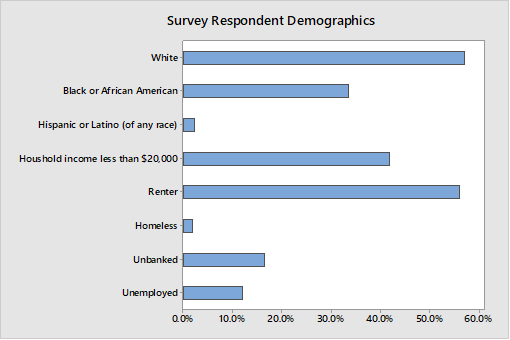Update on Study Led by Dr. Robert A. Simons Examines Impact of “EZfare” on Quality of Life of Low-Income Transit Riders
A research team led by Dr. Robert (Roby) A. Simons, Professor and Department Chair at the Maxine Goodman Levin School of Urban Affairs, has released preliminary research findings on "EZfare,” an automated no-touch transit payment system that has recently been implemented by public transit authorities throughout Ohio. Funded through the Federal Transit Administration's Integrated Mobility Innovation (IMI) Program, the three-year research study looks at the effect of EZfare on the quality of life of transit riders and the potential role of contactless EZfare smart cards in preventing the spread of COVID-19. CSU's team is working with NEORide on this project, and SARTA (Canton's transit agency) is the lead grant recipient. The research team includes Mark Henning, Research Associate at Levin, Abby Poeske, PhD student at Levin, and Malcolm Trier, MUPD student at Levin.
The preliminary results below include data for the transit agencies serving Cincinnati, Akron, Canton, and Painesville. In all, ten Ohio transit agencies (and one in northern Kentucky) are participating in the study. The team collected surveys online and by telephone from 1,081 transit riders in four urban transit agencies in Ohio. The respondents are largely representative of the transit riders in their respective market areas, and a profile is included here:

Questions focused on destination and trip mode before the onset of the COVID-19 pandemic (early March 2020) and during COVID-19 (late 2020), as well as on concerns about contracting the virus. Weekly one-way trips of all types were reduced by 32%. Essential trips like shopping and work dropped the least (11-19%), while trips related to social visits and worship were reduced the most (49-61%). In terms of travel method, bus was by far the most common mode utilized and along with personal car use, and paratransit dropped the least (about 20% for essential trips). Walking and ride share for essential travel dropped the most (about 45%). Also, about 45% of respondents were moderately or extremely concerned about contracting COVID-19 from other passengers, from touching surfaces, or in general.
The research team also ran a series of regression analyses using demographic characteristics such as independent variables, seeking to explain reductions in weekly trips (dependent variable). The team found that the following variables were most strongly associated with reduced travel: female, non-white, married, children at home, incomes over $85,000, and areas with high COVID-19 infection rates. Not having a bank account and being employed (including working from home) were associated with stable or increased trips.
The research team also ran models on self-reported feelings of connectivity to the community. Those that reduced their trips the most were feeling less connected, as were females, those with a driver's license, and those with children. Unbanked people did not generally report experiencing a loss of connectivity.
The final set of runs addressed fear of contracting COVID-19. The respondents who were more likely to have an increased fear of acquiring COVID-19 were: nonwhite, have children, and were married. Conversely, being employed or having a driver's license decreased the chances that individuals were afraid of COVID-19.
To summarize, reduced travel behaviors in the middle of the COVID-19 pandemic are largely borne disproportionately by females, non-whites, married people, those with children at home, those having incomes over $85,000, and those traveling in areas with high COVID-19 infection rates. Unbanked people overall did not report trip reductions or increased feelings of being disconnected to the community. Some other preliminary findings (holding all else constant) show that age, veteran status, disability status, college education level, and access to a car at home did not appear to be a factor in any of the team's models. Also, fear of catching COVID-19 did not appear to have a noticeable impact on people's travel behavior.
The Maxine Goodman Levin School of Urban Affairs research team is completing the pretest phase of the study (before EZfare and its validator devices and stored values are completely installed in the vehicle fleets), and the first of three post-test survey waves is scheduled to begin in summer 2021.